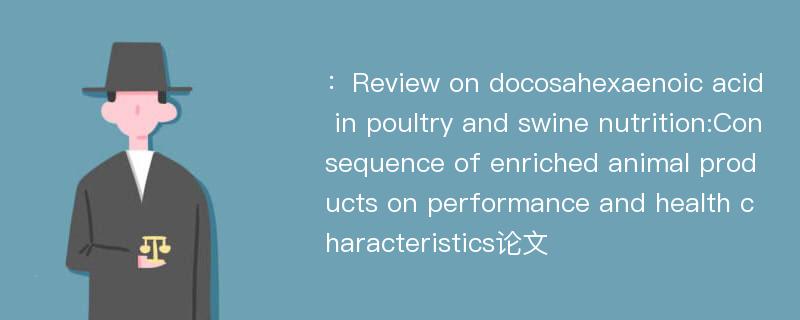
本文主要研究内容
作者(2019)在《Review on docosahexaenoic acid in poultry and swine nutrition:Consequence of enriched animal products on performance and health characteristics》一文中研究指出:Omega-3 polyunsaturated fatty acids(n-3 PUFA) are linked to a variety of health benefits against human disorders and disease. However, the typical western diet is generally low in n-3 PUFA and high in n-6 PUFA, suggesting that the recommended intake of these essential fatty acids is seldom achieved.Therefore, dietary enrichment of animal meat and eggs with n-3 PUFA could help increase consumption of these fatty acids. Fish oils and microalgae(MA) are rich sources of long chain n-3 PUFA, specifically eicosapentaenoic acid(EPA) and docosahexaenoic acid(DHA). Feeding these marine products has been shown to increase DHA content of tissues and yolk, however, this may also lead to an increased requirement for anti-oxidants to prevent oxidative deterioration and associated negative sensory attributes. Nonetheless, increased DHA has been linked to promising results in animal growth, fertility,immunity and bone strength in both pigs and poultry. These findings suggest that feeding DHA-rich ingredients to mono-gastric can enrich human diets as well as providing additional benefits to the animal.
Abstract
Omega-3 polyunsaturated fatty acids(n-3 PUFA) are linked to a variety of health benefits against human disorders and disease. However, the typical western diet is generally low in n-3 PUFA and high in n-6 PUFA, suggesting that the recommended intake of these essential fatty acids is seldom achieved.Therefore, dietary enrichment of animal meat and eggs with n-3 PUFA could help increase consumption of these fatty acids. Fish oils and microalgae(MA) are rich sources of long chain n-3 PUFA, specifically eicosapentaenoic acid(EPA) and docosahexaenoic acid(DHA). Feeding these marine products has been shown to increase DHA content of tissues and yolk, however, this may also lead to an increased requirement for anti-oxidants to prevent oxidative deterioration and associated negative sensory attributes. Nonetheless, increased DHA has been linked to promising results in animal growth, fertility,immunity and bone strength in both pigs and poultry. These findings suggest that feeding DHA-rich ingredients to mono-gastric can enrich human diets as well as providing additional benefits to the animal.
论文参考文献
论文详细介绍
论文作者分别是来自Animal Nutrition的,发表于刊物Animal Nutrition2019年01期论文,是一篇关于,Animal Nutrition2019年01期论文的文章。本文可供学术参考使用,各位学者可以免费参考阅读下载,文章观点不代表本站观点,资料来自Animal Nutrition2019年01期论文网站,若本站收录的文献无意侵犯了您的著作版权,请联系我们删除。
